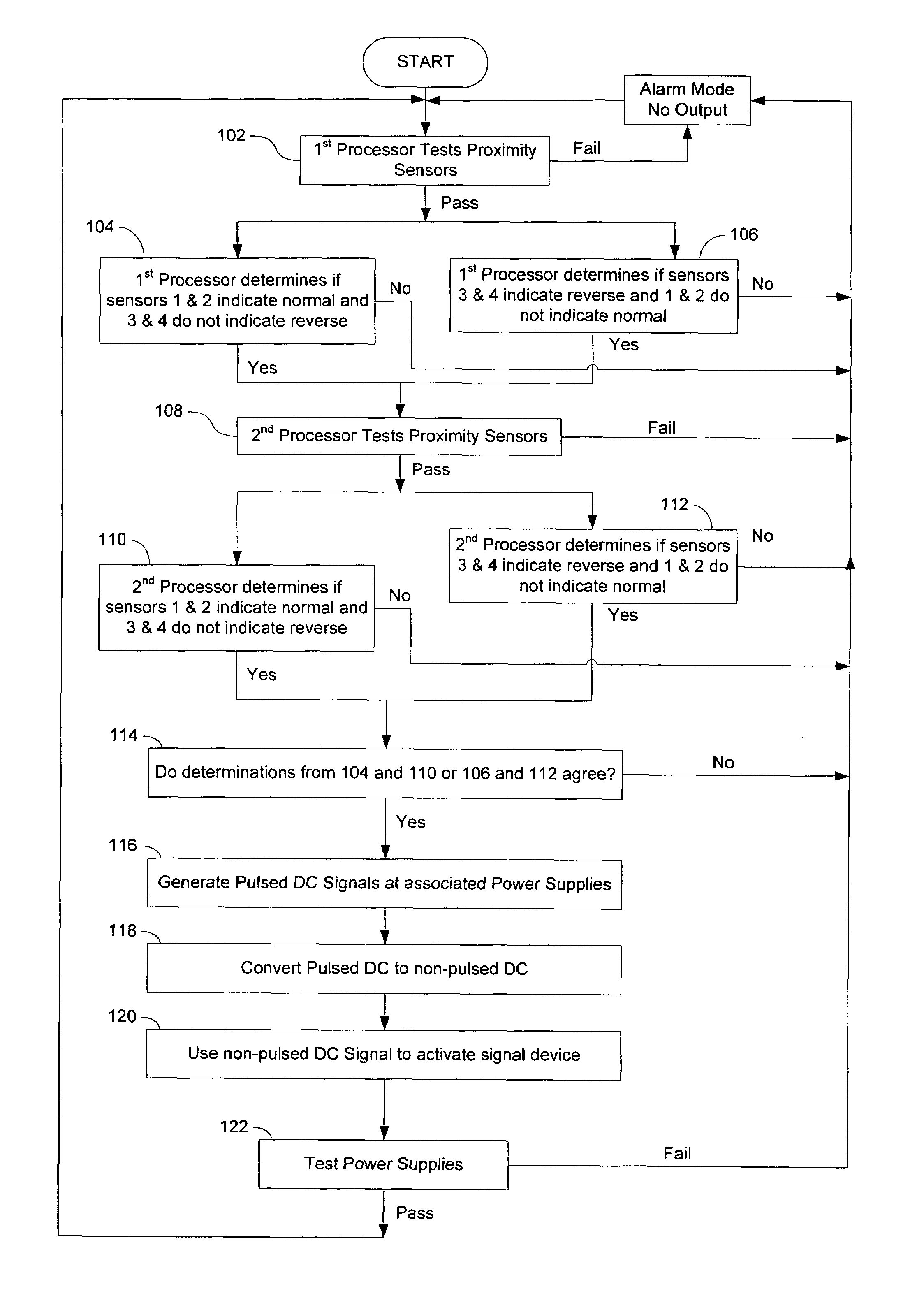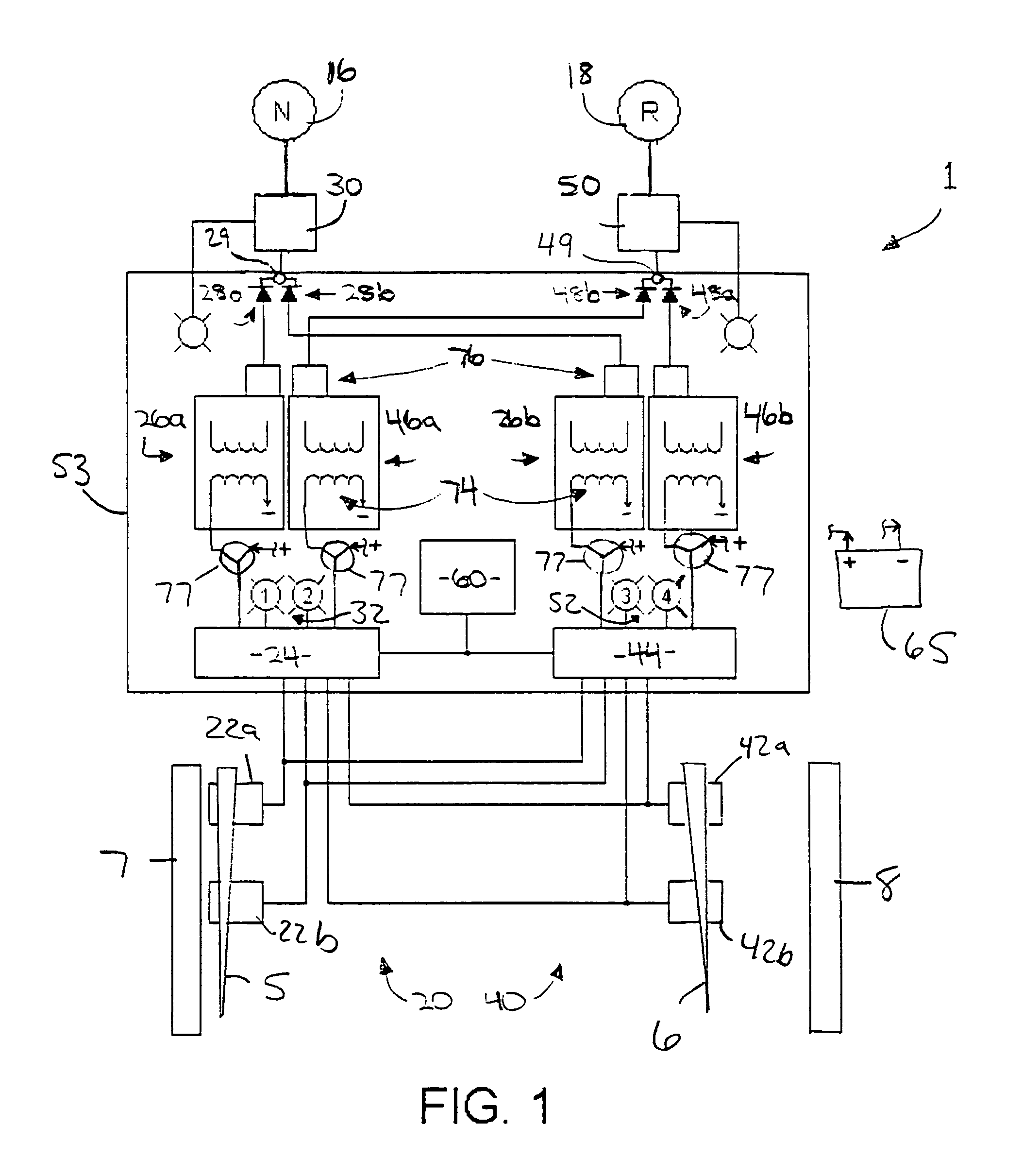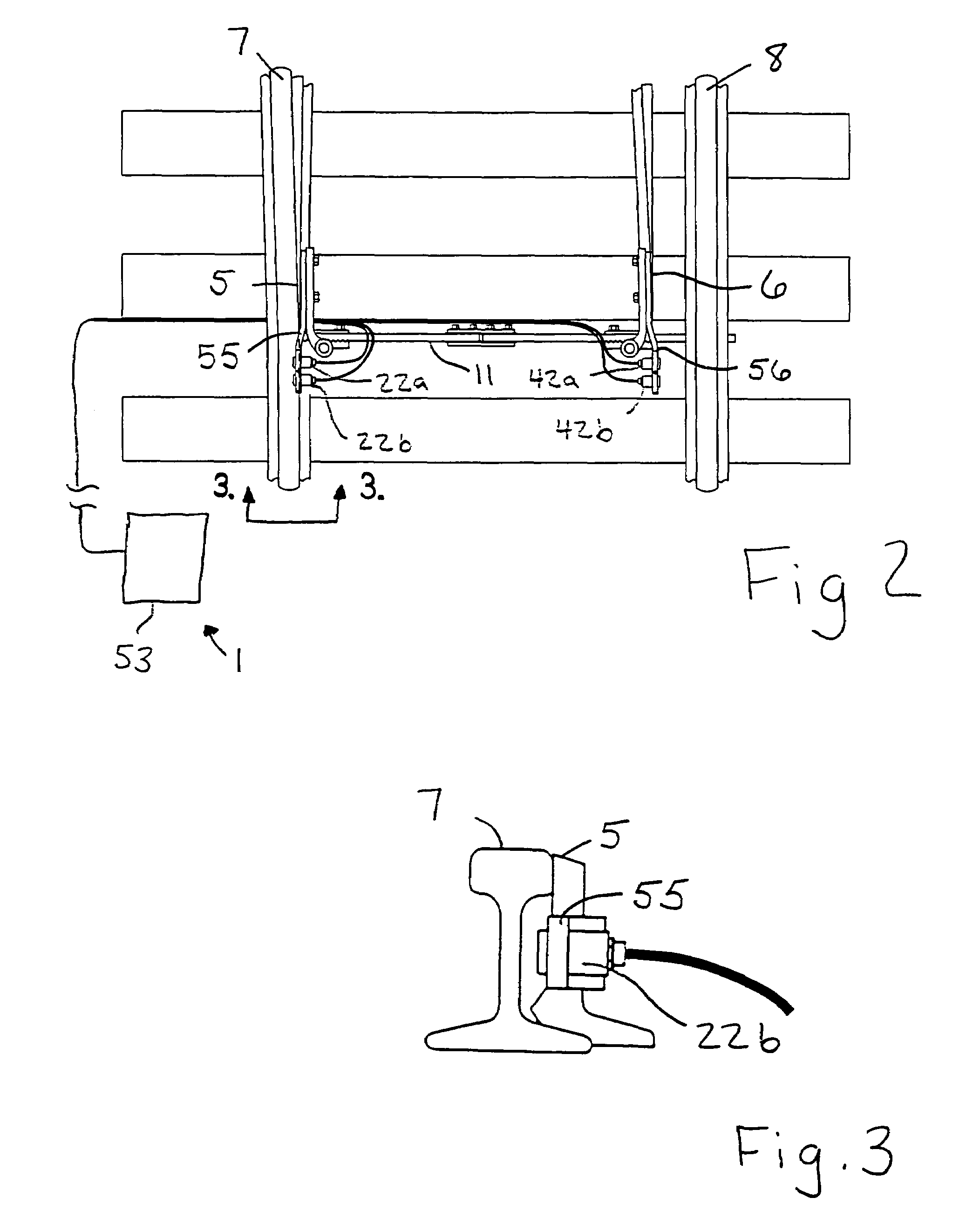Proximity detection and communication mechanism and method
a communication mechanism and proximity technology, applied in the direction of navigation instruments, instruments, roads, etc., can solve the problems of loss of detection, increased maintenance costs, inaccurate indications, etc., and achieve the effect of facilitating testing the mechanism
- Summary
- Abstract
- Description
- Claims
- Application Information
AI Technical Summary
Benefits of technology
Problems solved by technology
Method used
Image
Examples
first embodiment
[0021]FIG. 1 is a block diagram showing major components of a preferred first embodiment of the vital proximity detection mechanism of the present invention;
[0022]FIG. 2 is a fragmentary top plan view showing placement of first, second, third and fourth proximity sensor components of the present invention relative to rail switch points;
[0023]FIG. 3 is a fragmentary cross-sectional elevation view taken along line 3-3 of FIG. 2;
[0024]FIG. 4 is a front view of a remote status indicator unit for use in testing the mechanism of FIG. 1;
[0025]FIG. 5 is a flowchart showing steps involved in operation of the mechanism of FIG. 1.
second embodiment
[0026]FIG. 6 is a block diagram showing major components of a preferred second embodiment of the vital proximity detection mechanism of the present invention;
DETAILED DESCRIPTION OF A PREFERRED EMBODIMENT
[0027]With reference to the figures, a vital proximity detection (VPD) mechanism 1 and method is herein described, shown, and otherwise disclosed in accordance with a preferred embodiment of the present invention. The mechanism 1, a preferred embodiment of which is shown schematically in FIG. 1, is an electronic solid-state device for determining a proximity and alignment of a first part or member relative to a second part or member within a tolerance required by the particular application. In one contemplated application, as generally shown in FIG. 2, the mechanism 1 is adapted for use in determining the position of a normal and reverse switch points 5 and 6 relative to first and second stock rails 7 and 8 and more specifically for providing output signals indicative of whether the...
PUM
 Login to View More
Login to View More Abstract
Description
Claims
Application Information
 Login to View More
Login to View More - R&D
- Intellectual Property
- Life Sciences
- Materials
- Tech Scout
- Unparalleled Data Quality
- Higher Quality Content
- 60% Fewer Hallucinations
Browse by: Latest US Patents, China's latest patents, Technical Efficacy Thesaurus, Application Domain, Technology Topic, Popular Technical Reports.
© 2025 PatSnap. All rights reserved.Legal|Privacy policy|Modern Slavery Act Transparency Statement|Sitemap|About US| Contact US: help@patsnap.com



